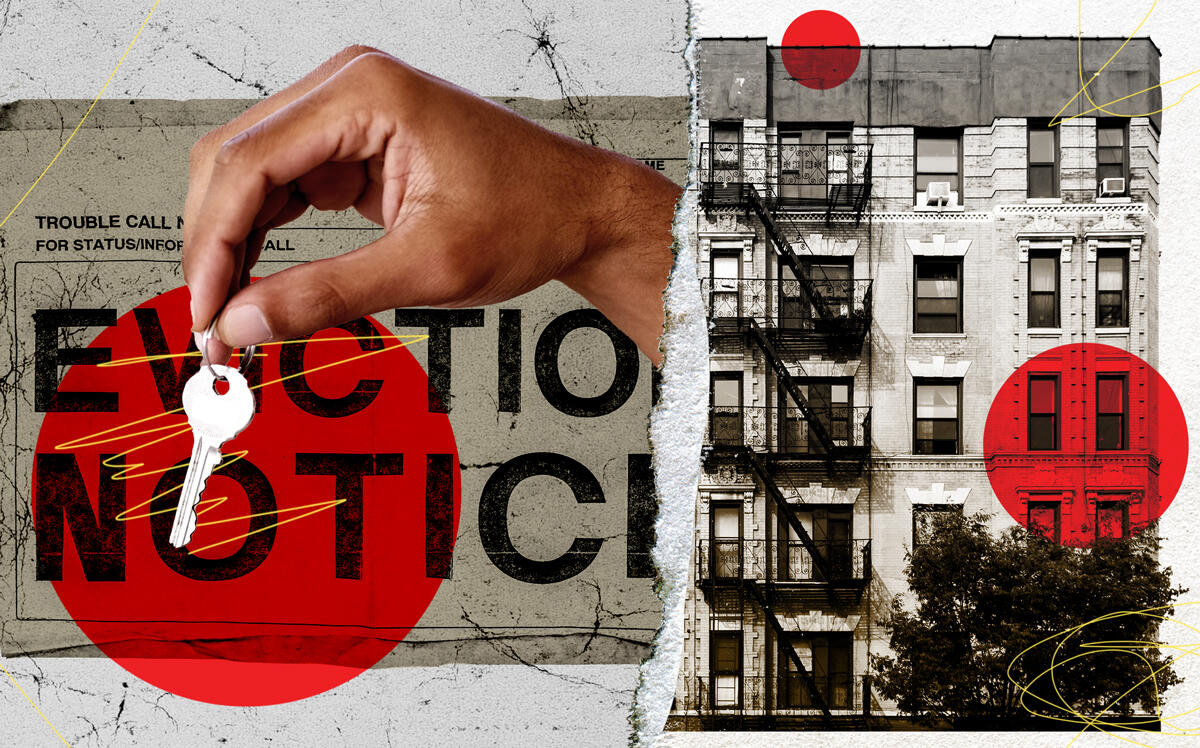 With evictions clock ticking, tenant advocates throw Hail Mary
With evictions clock ticking, tenant advocates throw Hail Mary
Trending
Black NY renters 3x more likely to face eviction than whites: report
Study of risks seized on by advocates for good cause eviction

It’s been a month and a half since New York’s eviction moratorium ended, and advocates who tried to get good cause eviction passed before then are still rallying for it.
Their latest effort is a report finding Black renters face eviction at a disproportionately higher rate than whites. The report, by the Urban Democracy Lab at NYU and the Community Service Society of New York, gauges risk factors and does not include data on eviction filings or actual evictions.
As of early January, U.S. Census Bureau data in the report showed 13 percent of Black New Yorkers believed they were likely to be evicted in the next two months. That’s compared to 7 percent of all New York renters surveyed and just 4 percent of white tenants.
The report links that fear to the dearth of savings Black tenants in New York City hold compared to white households as justification for good cause legislation. A Community Service Society survey last year found that Black renters are twice as likely as whites to have nothing in their savings accounts.
Also, more than half of white renters surveyed said they had more than $10,000 in savings. Only 22 percent of Black tenants said the same.
Read more
 With evictions clock ticking, tenant advocates throw Hail Mary
With evictions clock ticking, tenant advocates throw Hail Mary
 Cashed out: Nonwhite homeowners denied access to refi bonanza
Cashed out: Nonwhite homeowners denied access to refi bonanza
Because good cause would provide some eviction protection for tenants hit with a rent increase of more than 3 percent or 1.5 times the regional inflation rate, whichever is higher, the report authors argue that the legislation would be especially helpful to Black families, given the differential in their resources. Good cause does not otherwise protect tenants who owe rent.
The studies did not isolate race as a factor in eviction risk. Still, a Community Service Society report from early January offers a snapshot of the rent burdens of low-income renters — those earning up to 200 percent of the federal poverty line — by race.
The nonprofit found that last year, 41 percent of Black renters in New York City reported their rent had increased, compared with 32 percent of white tenants. It also reported that 30 percent of Black renters anticipated falling behind on rent compared to 23 percent of white tenants.
So far, the tidal wave of evictions that housing advocates predicted ahead of the moratorium’s expiration has not materialized. In February, the first full month without the ban, the state court system logged 5,541 filings, far below the more than 20,000 suits filed in February 2020, the month before then-Gov. Andrew Cuomo enacted the moratorium.
However, it is clear that counties with a disproportionate percentage of Black renters, such as the Bronx, have been hit harder since the moratorium lapsed.
In the first two months of 2022, the Bronx had the highest number of eviction filings in New York state, 3,906, or over a quarter of all cases filed during that period. The Bronx has the highest share of Black renters, according to the NYU-CSSNY report, at 36 percent, and about one-fourth of all renter households in the county would be eligible for good cause protections.




